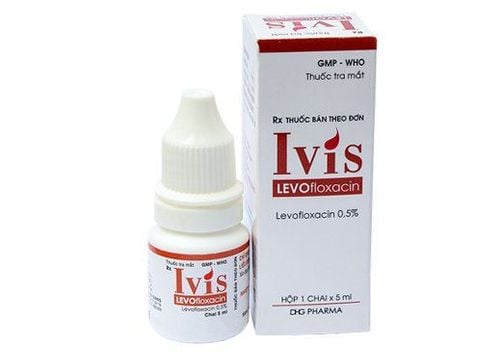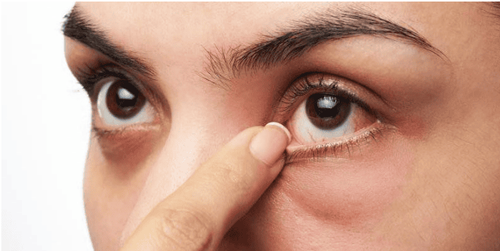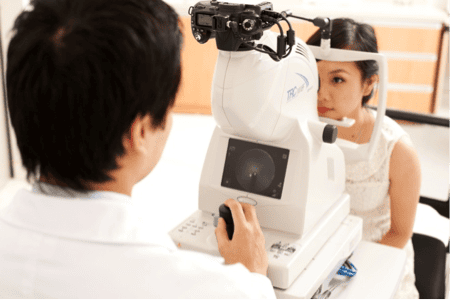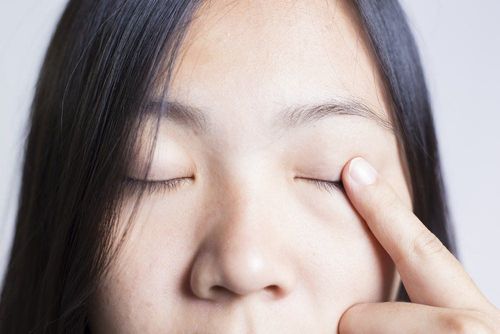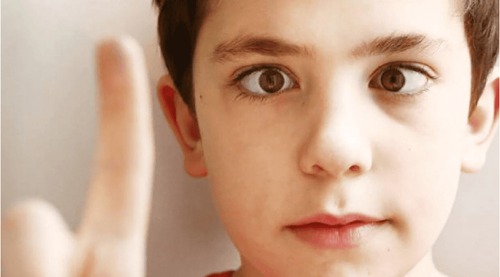This is an automatically translated article.
The article is professionally consulted by Master, Doctor Hoang Thanh Nga - Ophthalmologist - Department of Medical Examination and Internal Medicine - Vinmec Ha Long International General Hospital.
Ingrown hairs (Enlarged eyelids) is a condition that can be seen in anyone, including infants and the elderly. Enlarged eyelids, although not too dangerous, often cause discomfort and affect the patient's daily activities.
1. What is trichiasis?
Trichiasis is a condition in which the eyelashes grow in the wrong direction and curl inwards on the inside of the eyelids. This causes the cornea and conjunctiva to be constantly rubbed by the eyelashes, leading to damage.
The ingrown hairs can appear scattered in small segments or appear on the entire eyelid area.
2. Causes of trichiasis
Trichinosis can be caused by many causes, such as:
2.1 Congenital quilled hair
Congenital tribulus is usually due to structural defects of the ciliary cartilage or hyperplasia of the sphincter and dermis in neonates. At that time, the eyelid margin turns inward, causing the eyelashes to constantly rub against the cornea. The disease, if not treated in time, can progress to corneal ulcers and adversely affect the child's vision.
2.2 Due to old age
This is considered to be one of the most common causes in people with trichiasis. The phenomenon of aging in the elderly makes the supporting tissues of the eyelids loose, causing the eyelashes to not be kept in the right direction and inward causing discomfort, itching, red eyes, and watery eyes.
Tuổi già là nguyên nhân gây ra bệnh lông quặm
2.3 Torn hair due to spasm
Chronic blepharospasm can be seen in cases of eye inflammation or post-operative trauma. This condition occurs more often on the lower eyelid.
2.4 Ingrown hairs due to scarring
Some conjunctival diseases can lead to entropion complications such as ocular pemphigus, trachoma, chemical burns, Stevens - Johnson syndrome... When the eyelid conjunctiva is scarred, the eyelid cartilage is damaged. curved inward, in some cases accompanied by partial lash adhesions.
3. Common signs and symptoms of trichiasis
The common symptoms of trichiasis are quite easy to recognize, when the trichoriasis is in constant contact with the conjunctiva and cornea, it can cause:
Watery tears Red eyes The eyelid area has crusted crusts and discharge. Mucus Eyes feel lumpy, uncomfortable Sensitivity to light, especially when looking at bright light can cause eye pain Vision loss
4. Effective treatment of trichiasis
4.1 Diagnostic methods of trichiasis
In cases where trichiasis is suspected, the doctor will use a comprehensive slit lamp to examine the anterior portion. From there, there is a basis to evaluate the distribution of the incised eyelashes, and at the same time find the cause and distinguish it from other diagnoses.
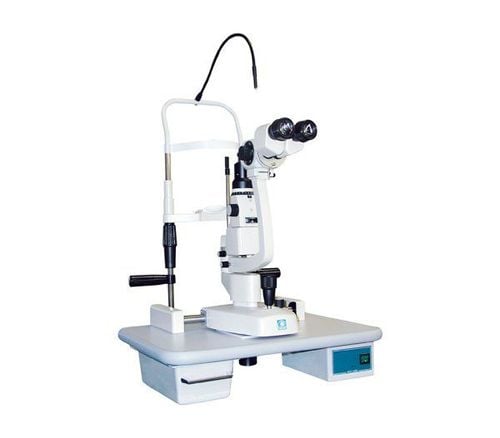
Có thể sử dụng đèn khe để khám bệnh lông quặm
4.2 Treatment methods for trichiasis
The most commonly used treatment for trichiasis is surgery. Depending on the cause of the trichiasis, the doctor will choose different intervention techniques such as eyelash/hair follicle repositioning or eyelash/hair follicle removal.
4.3 Repositioning of eyelashes/hair follicles
Eyelash/hair follicle repositioning surgery is performed specifically as follows:
For horizontal or sagging eyelid entropion: The doctor will reattach the lower eyelid retractor muscle and remove the layer. body cartilage. For posterior scarring: The posterior lamina and arch can often be lengthened with the use of grafts.
4.4 Million eyelashes/hair follicles
Partial or local ingrown hairs can be treated by surgical removal of eyelashes/hair follicles. The use of regular forceps to pluck hairs is simply a timely measure because the hair follicles are still left. When it does, the hair that grows back can be even stiffer and more uncomfortable than before.
A more effective method of eyelash removal is electric eyelash removal. However, this method requires the patient to endure pain and sometimes causes difficulties for the medical team.
Besides surgical intervention, patients can reduce the rubbing of the eyelashes by using lubricants such as ointments or artificial tears. In addition, patients with trachoma can also consult their doctor about the use of doxycycline to inhibit myofibroblasts, thereby limiting and preventing the recurrence of trachoma after surgery. .
The patient may be prescribed medical treatment if the condition is serious, such as Stevens - Johnson syndrome or scarred bullae in the eye.
5. Methods to prevent and limit trichiasis
To be able to prevent and limit trichiasis in the best way, patients need to be fully informed about this condition. Ingrown hairs are not dangerous, but if left untreated, they can become serious and affect vision.
Therefore, the patient should be alert to any symptoms of trichiasis. When the symptoms of trichiasis as mentioned above appear, you should immediately go to the ophthalmology facilities for specific examination and advice.
Any questions that need to be answered by a specialist doctor as well as customers wishing to be examined and treated at Vinmec International General Hospital, you can contact Vinmec Health System nationwide or register online HERE.




